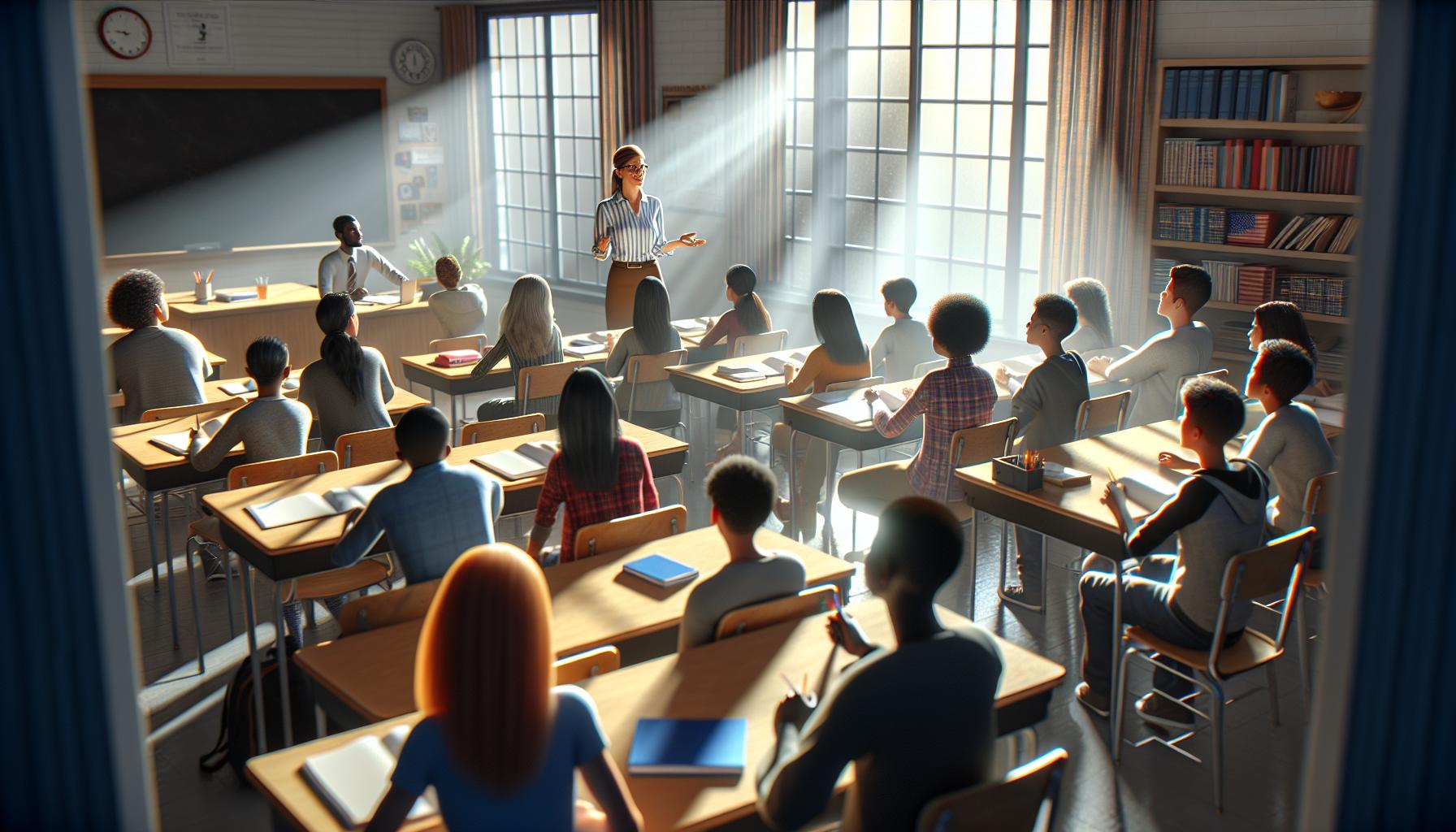Physical Address
304 North Cardinal St.
Dorchester Center, MA 02124
Physical Address
304 North Cardinal St.
Dorchester Center, MA 02124

Creative writing teachers have one of the most rewarding careers in education – they get to inspire the next generation of storytellers authors and poets. It’s a profession where imagination meets instruction and where passionate educators help students find their unique literary voice.
In today’s digital age the demand for creative writing teachers continues to grow across universities community colleges and online learning platforms. These professionals don’t just teach grammar and structure; they nurture creativity guide aspiring writers through the creative process and help students develop their storytelling abilities. Whether it’s crafting compelling narratives developing memorable characters or mastering the art of poetry creative writing teachers play a vital role in shaping tomorrow’s literary landscape.
Creative writing educators work across diverse educational settings with distinct responsibilities. Each position offers unique opportunities to shape writers at different stages of their development.
K-12 creative writing teachers integrate storytelling into language arts curricula. Elementary school positions focus on foundational writing skills through imaginative exercises like character creation exercises. Middle school teachers guide students through poetry workshops, short story development, and personal narrative writing. High school positions incorporate advanced techniques including screenplay writing, literary magazine production, and creative nonfiction exploration. Many K-12 roles require state teaching certification plus specialized training in creative writing instruction.
Universities employ creative writing faculty in multiple capacities. Full-time professors teach undergraduate workshops, graduate seminars, and specialized genre courses. Adjunct instructors lead introductory creative writing classes focusing on fiction, poetry, or creative nonfiction. Writing center directors coordinate peer tutoring programs and provide one-on-one manuscript consultations. Academic positions typically require an MFA or Ph.D. in creative writing plus published works in relevant genres.
Community programs create accessible creative writing education outside traditional institutions. Writing centers offer workshops for aspiring authors at all skill levels. Libraries host creative writing circles led by experienced instructors. Senior centers employ teachers for memoir writing groups. Online learning platforms contract creative writing instructors for virtual courses. These positions value teaching experience plus demonstrated writing expertise through publications or performance credentials.

Teaching creative writing demands a combination of academic expertise, professional certification, and hands-on writing experience. Educational institutions establish specific requirements based on the teaching level and program type.
A Master of Fine Arts (MFA) in Creative Writing serves as the standard qualification for teaching at colleges and universities. Bachelor’s degrees in English, Literature, or Creative Writing provide entry-level opportunities in K-12 settings or community programs. Doctoral degrees (Ph.D.) open doors to tenure-track positions at universities, research opportunities, and department leadership roles. Top-tier universities prioritize candidates with degrees from accredited programs recognized by the Association of Writers & Writing Programs (AWP).
State-specific teaching licenses enable creative writing instruction in public K-12 schools. The National Council of Teachers of English (NCTE) certification validates specialized knowledge in writing instruction. Professional development certificates from organizations like the National Writing Project enhance teaching credentials. Online teaching platforms require platform-specific certifications that verify digital instruction capabilities. Teaching English as a Second Language (TESOL) certificates expand opportunities to teach creative writing to international students.
Published works demonstrate practical expertise in the field. Literary journal publications, books, poetry collections, or digital media content showcase active engagement in the writing community. Three to five years of documented writing experience strengthens teaching applications. Industry recognition through writing awards, fellowships, or residencies elevates professional credibility. Editorial experience with literary magazines or publishing houses adds valuable perspective to teaching methodology. Regular contributions to writing conferences or workshops indicate ongoing professional development.
Creative writing teaching positions exist across diverse educational platforms. The following channels provide targeted opportunities for aspiring creative writing educators.
HigherEdJobs.com lists 500+ creative writing teaching positions annually, with peak postings during spring recruitment seasons. The Chronicle of Higher Education’s job board features tenure-track positions at colleges nationwide. Academic Keys specializes in university creative writing roles, posting 200+ opportunities each semester. InsideHigherEd connects qualified candidates with positions at community colleges, four-year institutions, and writing centers. The Modern Language Association (MLA) Job List posts faculty openings in English departments, including creative writing specializations.
The Association of Writers & Writing Programs (AWP) maintains a career center with 300+ teaching positions. Poets & Writers magazine publishes job listings for creative writing instructors at literary organizations. The National Council of Teachers of English (NCTE) features K-12 creative writing positions. PEN America connects writers with teaching opportunities at cultural institutions. The Society of Children’s Book Writers and Illustrators (SCBWI) posts positions for youth writing instruction.
Udemy enables creative writing experts to create courses reaching 40+ million students. Coursera partners with universities to offer creative writing instruction through verified certificates. MasterClass recruits published authors to teach specialized writing courses. Outschool connects creative writing teachers with K-12 students for live online classes. Writing Workshops offers positions for instructors to lead virtual creative writing seminars across multiple genres.
A strong teaching portfolio demonstrates expertise in creative writing instruction through tangible evidence of teaching effectiveness. The portfolio serves as a comprehensive showcase of educational achievements pedagogical approaches.
Sample lesson plans highlight teaching methods for different creative writing genres topics:
Each plan includes:
Student achievements validate teaching effectiveness through:
Portfolio examples include:
Professional publications establish credibility expertise:
Creative writing teaching positions offer multiple paths for professional advancement across educational institutions. Career progression opportunities range from departmental leadership to program administration roles.
Department chairs lead creative writing programs at colleges universities by managing faculty developing curricula setting program goals. Senior faculty positions include directing specialty tracks in fiction poetry or creative nonfiction. Leadership roles require demonstrated excellence in teaching publishing administrative experience typically spanning 5-10 years. Department heads earn median salaries of $85,000-$115,000 annually based on institution size location. Program coordinators oversee specific degree tracks while maintaining reduced teaching loads publishing requirements.
Writing program administrators (WPAs) manage entire creative writing departments including budgets scheduling faculty development. Key responsibilities include curriculum design assessment coordination student recruitment retention initiatives. WPAs collaborate with other departments to integrate creative writing across disciplines enhance program visibility. The position demands strong organizational skills expertise in writing pedagogy program assessment methods. Most WPA roles require terminal degrees 7+ years teaching experience demonstrated administrative capabilities.
Organizations like AWP NCTE offer certification programs workshops conferences to enhance teaching credentials. Professional memberships provide access to mentor networks publication opportunities research grants. Faculty development includes pedagogical training technological literacy assessment strategies classroom management. Growth opportunities encompass presenting at conferences publishing in academic journals serving on editorial boards. Online teaching platforms expand reach through courses workshops reaching global audiences increasing earning potential.
Creative writing teaching salaries vary based on institution type, position level, geographic location, and experience. Comprehensive benefits packages complement base salaries, creating competitive compensation structures across educational settings.
Public institution salaries for creative writing teachers range from $45,000 to $85,000 annually. State universities offer standardized pay scales with guaranteed step increases based on years of service. Benefits include state pension plans, health insurance, and paid leave. Private institutions provide higher base salaries, ranging from $60,000 to $120,000, with performance-based bonuses. Elite private universities offer additional perks such as housing allowances, research grants, and sabbatical opportunities. Private institutions typically provide retirement matching programs up to 8% of annual salary, comprehensive health coverage, and professional development funds averaging $2,500 per year.
| Institution Type | Salary Range | Average Benefits Value |
|---|---|---|
| Public | $45,000-$85,000 | $15,000-$25,000 |
| Private | $60,000-$120,000 | $20,000-$35,000 |
Full-time creative writing teachers earn consistent salaries with complete benefits packages. Tenure-track positions include research funding, conference travel allowances, and sabbatical opportunities. Benefits encompass health insurance, retirement plans, and paid time off. Part-time instructors receive compensation per course taught, ranging from $2,500 to $5,000 per semester. Adjunct positions offer flexible schedules with limited benefits. Online teaching platforms pay per student enrollment or course completion, averaging $50-$200 per student.
| Position Type | Compensation Structure | Benefits Included |
|---|---|---|
| Full-Time | Annual Salary | Complete Package |
| Part-Time | Per Course | Limited/None |
| Online | Per Student | Performance-Based |
Creative writing teaching jobs offer diverse opportunities for passionate educators to share their expertise and inspire the next generation of writers. From K-12 classrooms to prestigious universities and online platforms these positions provide flexible career paths with competitive compensation.
Success in this field requires a combination of academic credentials writing experience and effective teaching skills. With the right qualifications and a strong portfolio educators can build rewarding careers that contribute to the literary world while enjoying stable employment and growth opportunities.
As the demand for creative writing instruction continues to expand across various educational settings qualified teachers will find themselves well-positioned to make meaningful impacts in students’ lives while pursuing their own professional development and creative endeavors.